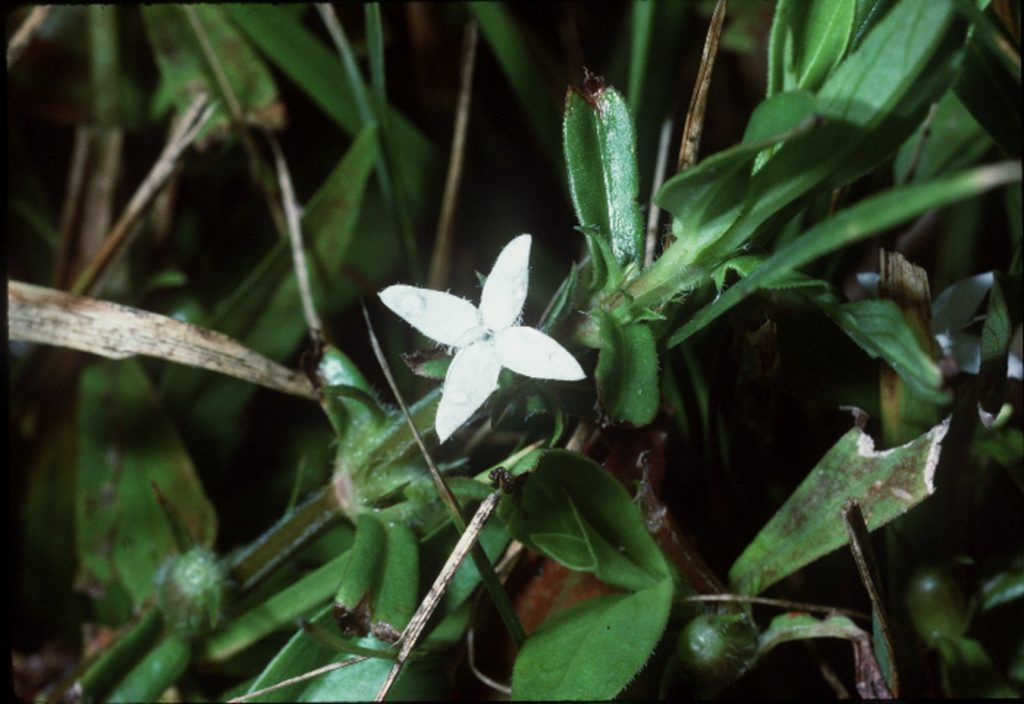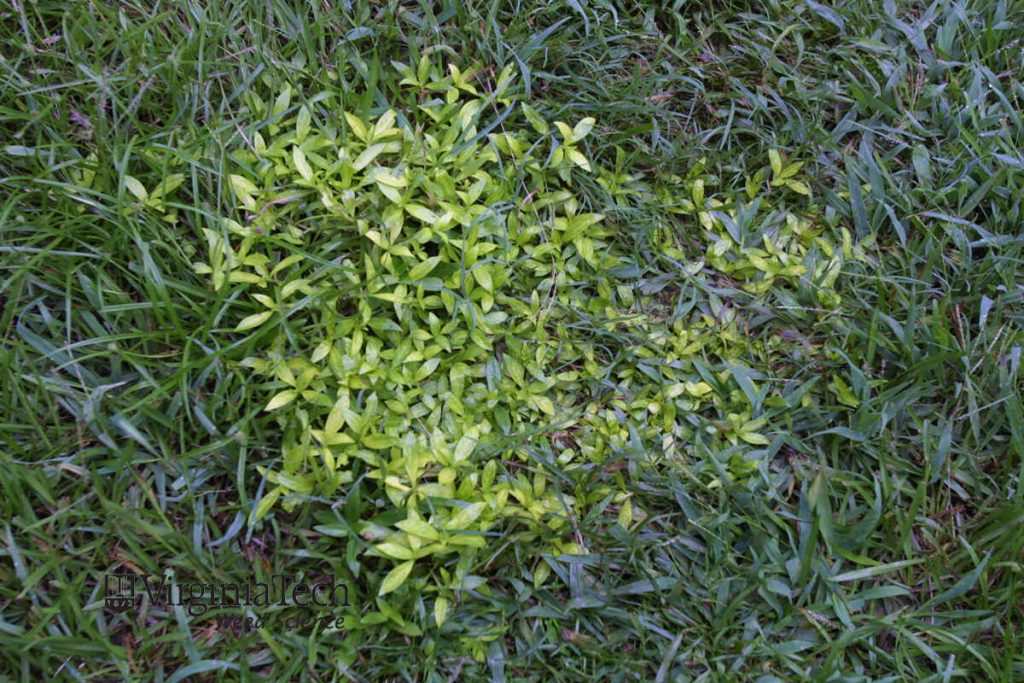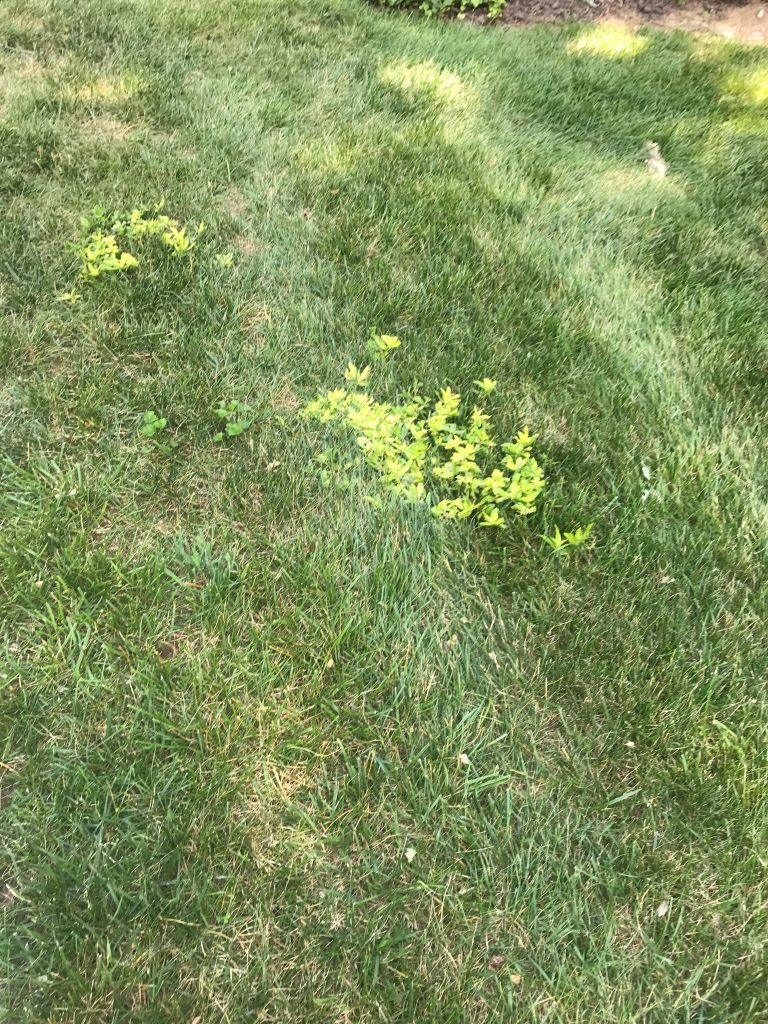Virginia Buttonweed (Diodia virginiana) is a common broadleaf weed that can be troublesome in both turfgrass lawns and ornamental beds.

Virginia buttonweed is a native plant of the southeast United States as indicated by the green shaded states on the map below from the USDA.

It is a deep-rooted perennial with prostrate or spreading branches. It has shiny, dark green, lance-shaped leaves that are oppositely arranged on the stems and are attached directly to the stem. The flowers (show above) are tubular and white with four petals. Flowering typically begins in June. The leaves of Virginia buttonweed often take on a mottled-yellow look due to a virus.
Habitat and Ecological Impacts: Virginia buttonweed thrives in poorly drained or overly moist lawns or ornamental beds caused by excessive rainfall or frequent irrigation. If left uncontrolled, it will form dense, thick mats that can choke out turfgrass.

Control and Management: Correct any drainage problems to reduce wet areas within the lawn or ornamental beds. In lawns, it may be beneficial to bag clippings when mowing in areas with Virginia buttonweed. The plant can spread by stem pieces cut and distributed during mowing. Also, when hand pulling, be aware that pieces of roots and stems that remain can re-sprout.
Contact the Henrico Extension Office or your local Virginia Cooperative Extension office for herbicide control recommendations of Virginia buttonweed. For effective control, use herbicides in the spring when the plants have emerged from dormancy. It may take two springs to have effective control of this weed. Later in the summer, older plants are more tolerant of selective herbicides, making these controls less effective.
When using herbicides, always read and follow label directions for rates, spraying conditions, and personal protective equipment. Do not spray when it is windy or raining, or when rain is forecasted. NEVER apply herbicides to standing water unless the herbicide is distinctly labeled for aquatic use. Remember, it is the herbicide applicator’s responsibility to apply the product in accordance to the instructions on the label. Please contact the Henrico Extension office for current chemical recommendations.

. Photo Credit: E.R. Olsen, Virginia Cooperative Extension.
This work is licensed under a Creative Commons Attribution-ShareAlike 3.0 Unported License.
- Additional Reading:

